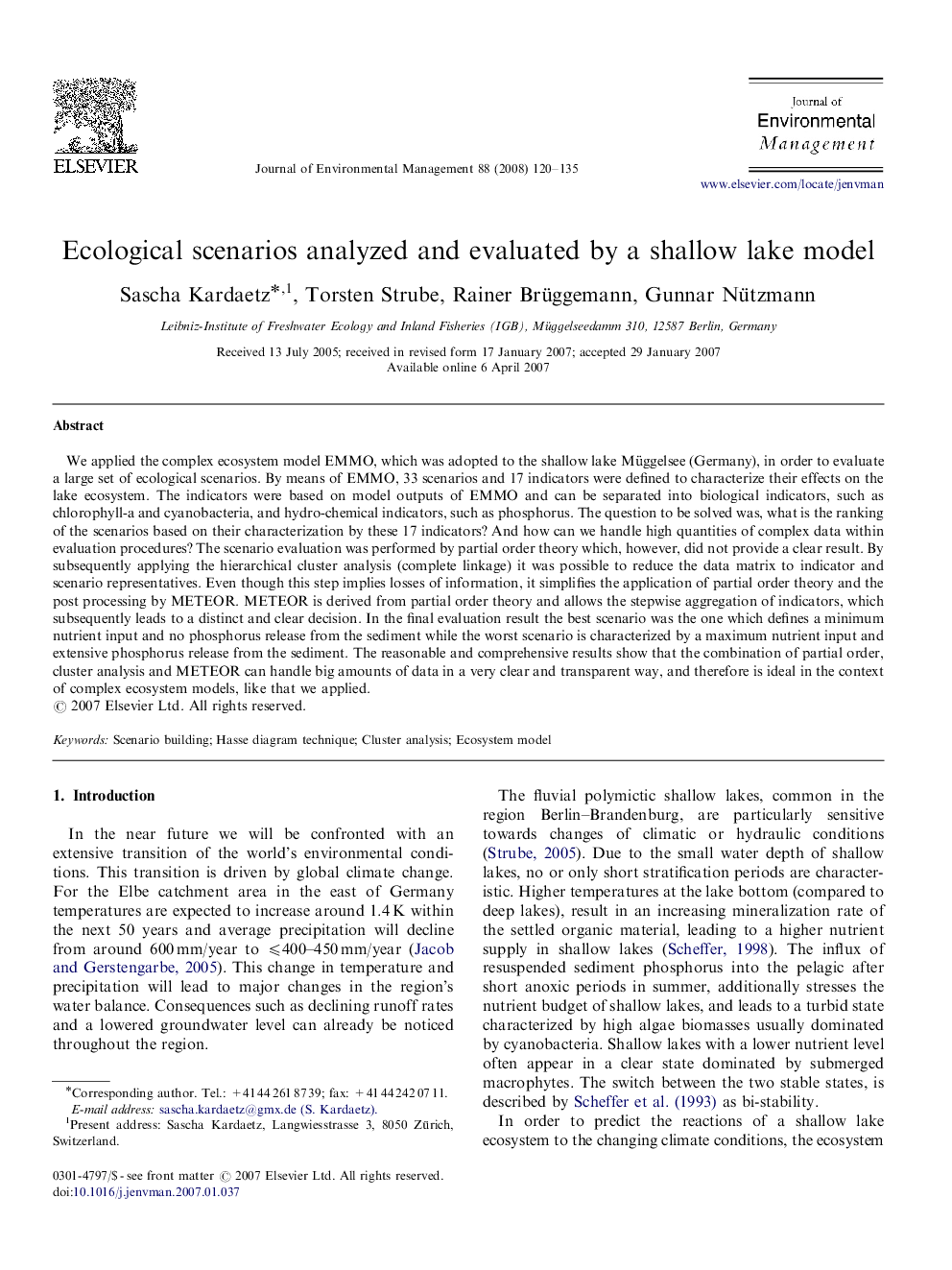| کد مقاله | کد نشریه | سال انتشار | مقاله انگلیسی | نسخه تمام متن |
|---|---|---|---|---|
| 1058562 | 947123 | 2008 | 16 صفحه PDF | دانلود رایگان |
عنوان انگلیسی مقاله ISI
Ecological scenarios analyzed and evaluated by a shallow lake model
دانلود مقاله + سفارش ترجمه
دانلود مقاله ISI انگلیسی
رایگان برای ایرانیان
کلمات کلیدی
موضوعات مرتبط
مهندسی و علوم پایه
مهندسی انرژی
انرژی های تجدید پذیر، توسعه پایدار و محیط زیست
پیش نمایش صفحه اول مقاله

چکیده انگلیسی
We applied the complex ecosystem model EMMO, which was adopted to the shallow lake Müggelsee (Germany), in order to evaluate a large set of ecological scenarios. By means of EMMO, 33 scenarios and 17 indicators were defined to characterize their effects on the lake ecosystem. The indicators were based on model outputs of EMMO and can be separated into biological indicators, such as chlorophyll-a and cyanobacteria, and hydro-chemical indicators, such as phosphorus. The question to be solved was, what is the ranking of the scenarios based on their characterization by these 17 indicators? And how can we handle high quantities of complex data within evaluation procedures? The scenario evaluation was performed by partial order theory which, however, did not provide a clear result. By subsequently applying the hierarchical cluster analysis (complete linkage) it was possible to reduce the data matrix to indicator and scenario representatives. Even though this step implies losses of information, it simplifies the application of partial order theory and the post processing by METEOR. METEOR is derived from partial order theory and allows the stepwise aggregation of indicators, which subsequently leads to a distinct and clear decision. In the final evaluation result the best scenario was the one which defines a minimum nutrient input and no phosphorus release from the sediment while the worst scenario is characterized by a maximum nutrient input and extensive phosphorus release from the sediment. The reasonable and comprehensive results show that the combination of partial order, cluster analysis and METEOR can handle big amounts of data in a very clear and transparent way, and therefore is ideal in the context of complex ecosystem models, like that we applied.
ناشر
Database: Elsevier - ScienceDirect (ساینس دایرکت)
Journal: Journal of Environmental Management - Volume 88, Issue 1, July 2008, Pages 120-135
Journal: Journal of Environmental Management - Volume 88, Issue 1, July 2008, Pages 120-135
نویسندگان
Sascha Kardaetz, Torsten Strube, Rainer Brüggemann, Gunnar Nützmann,